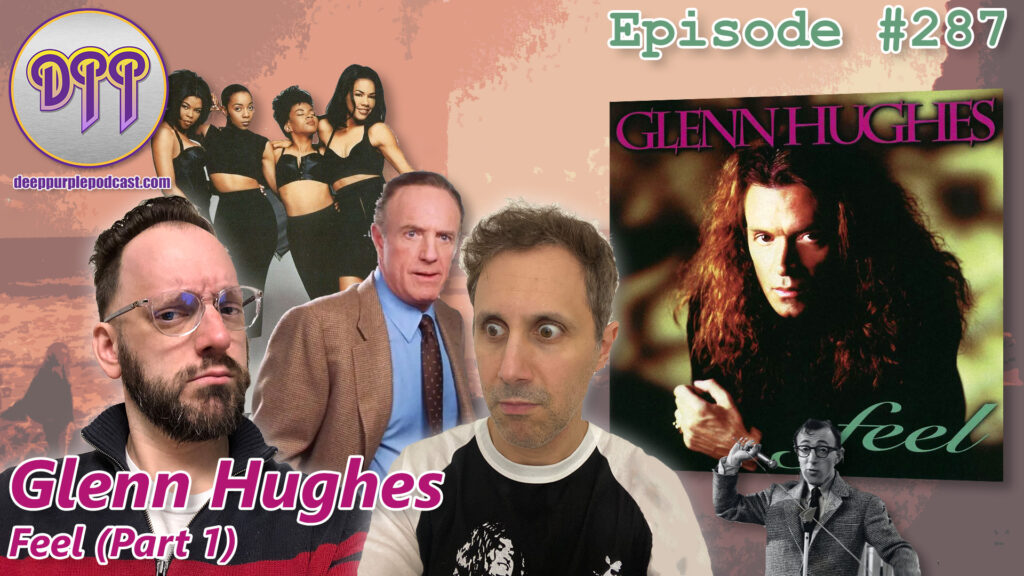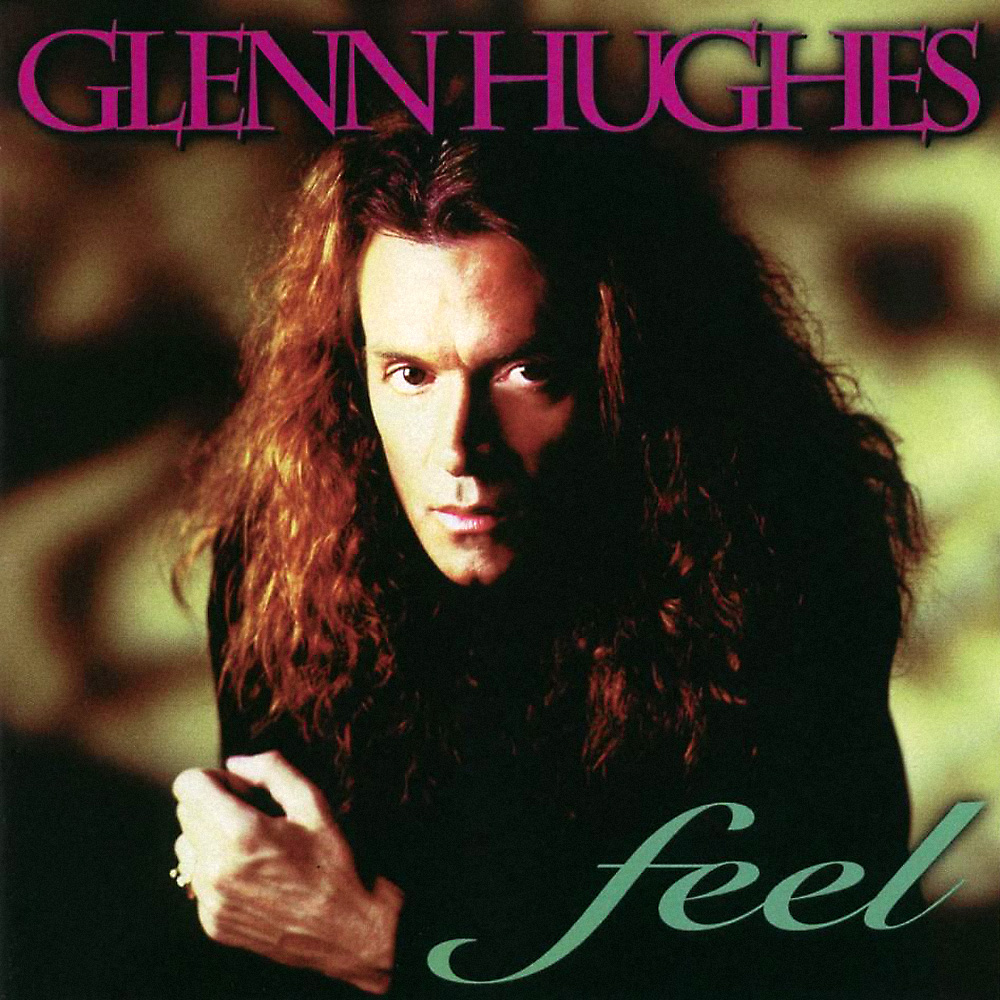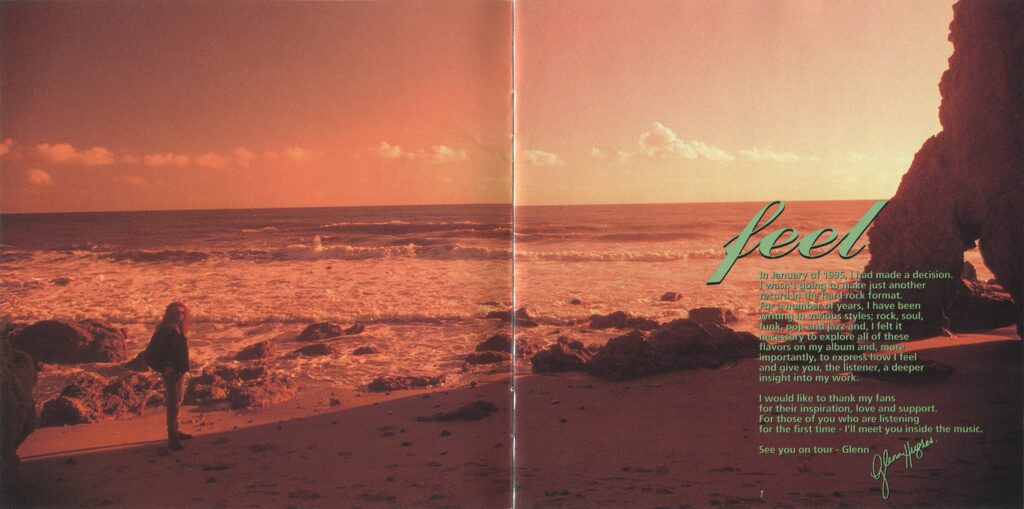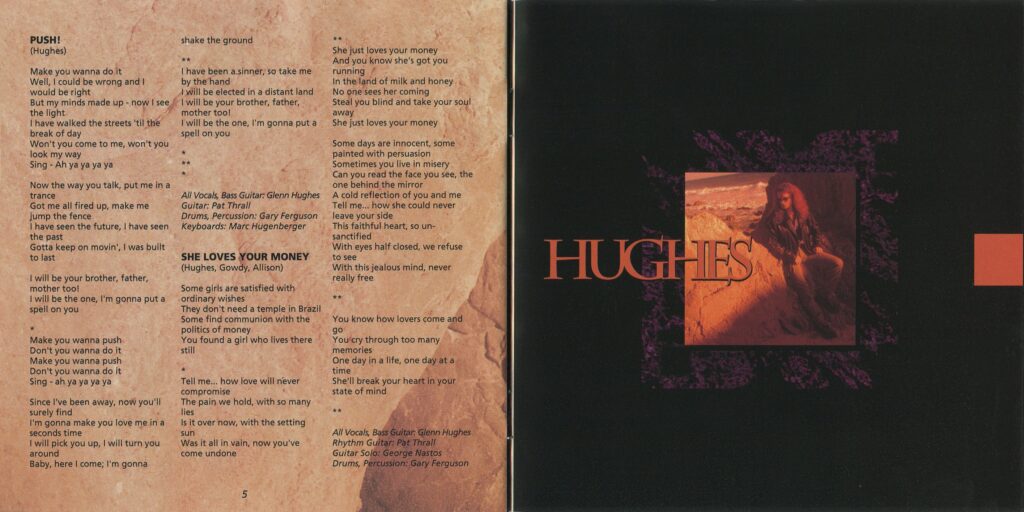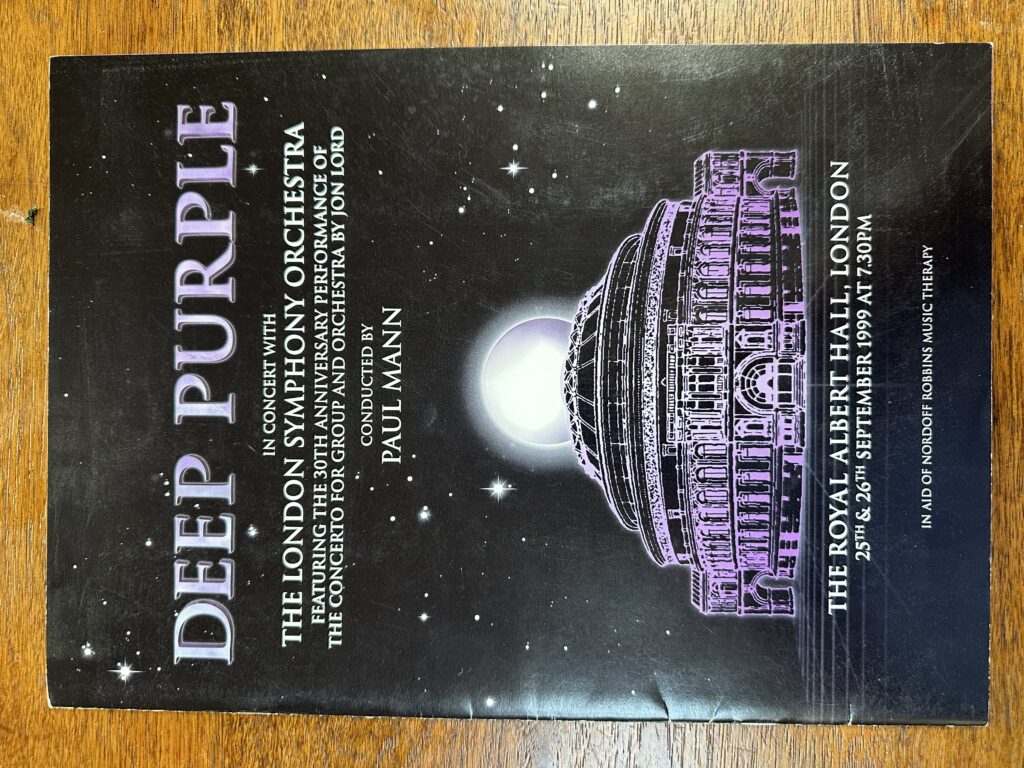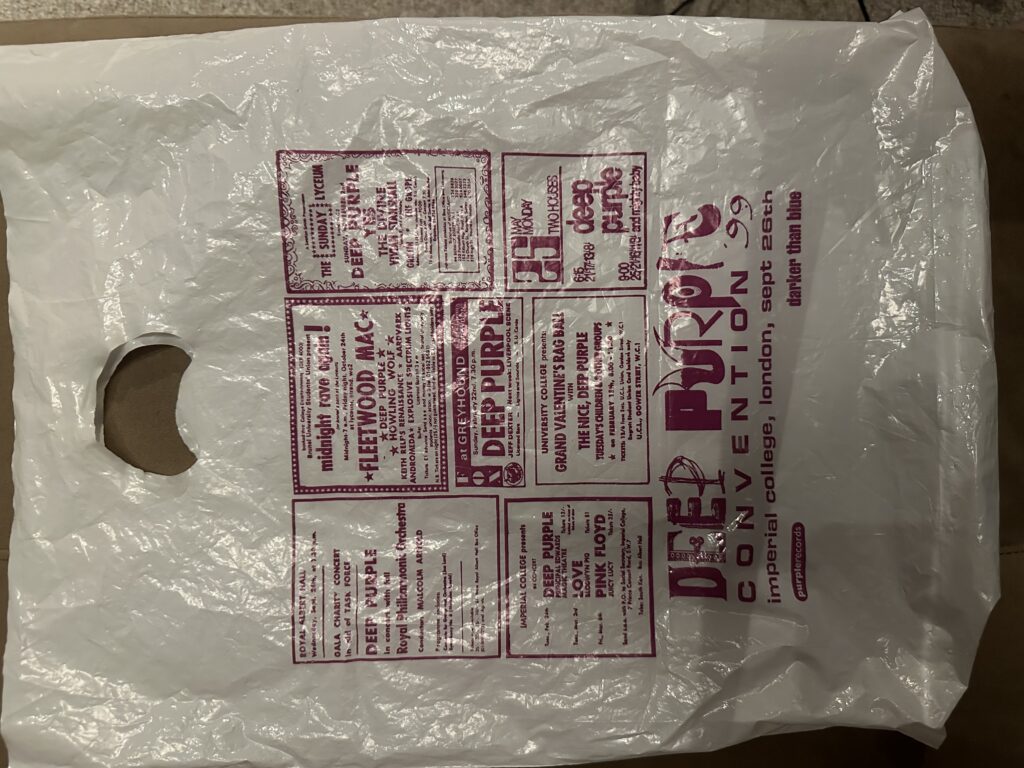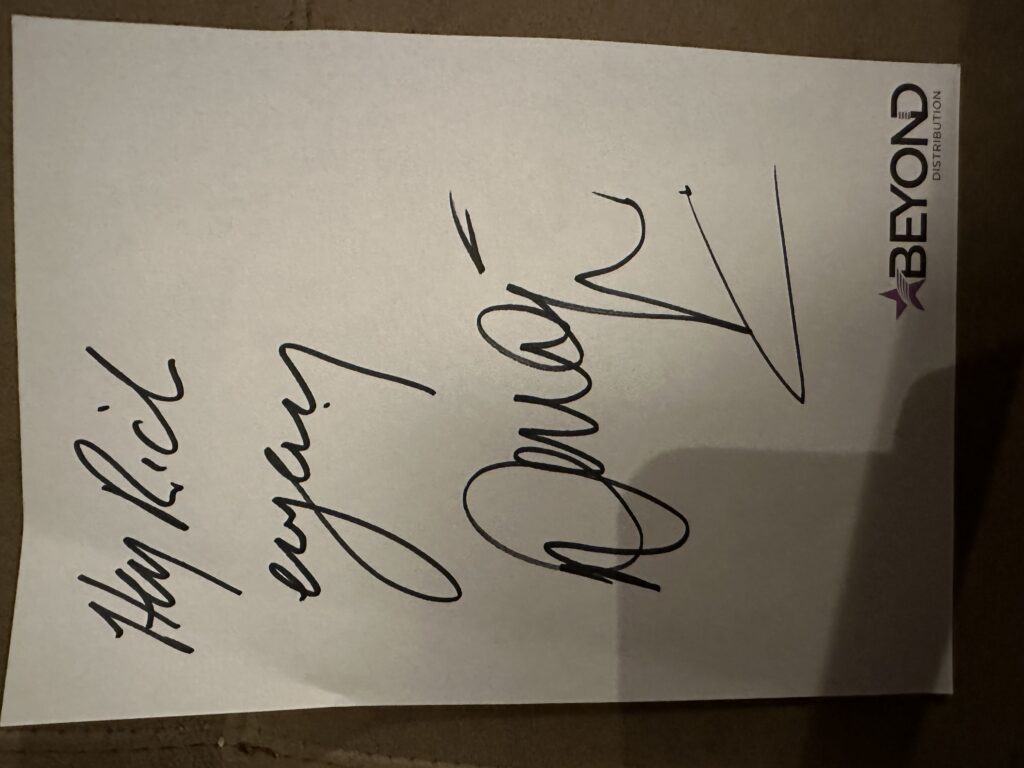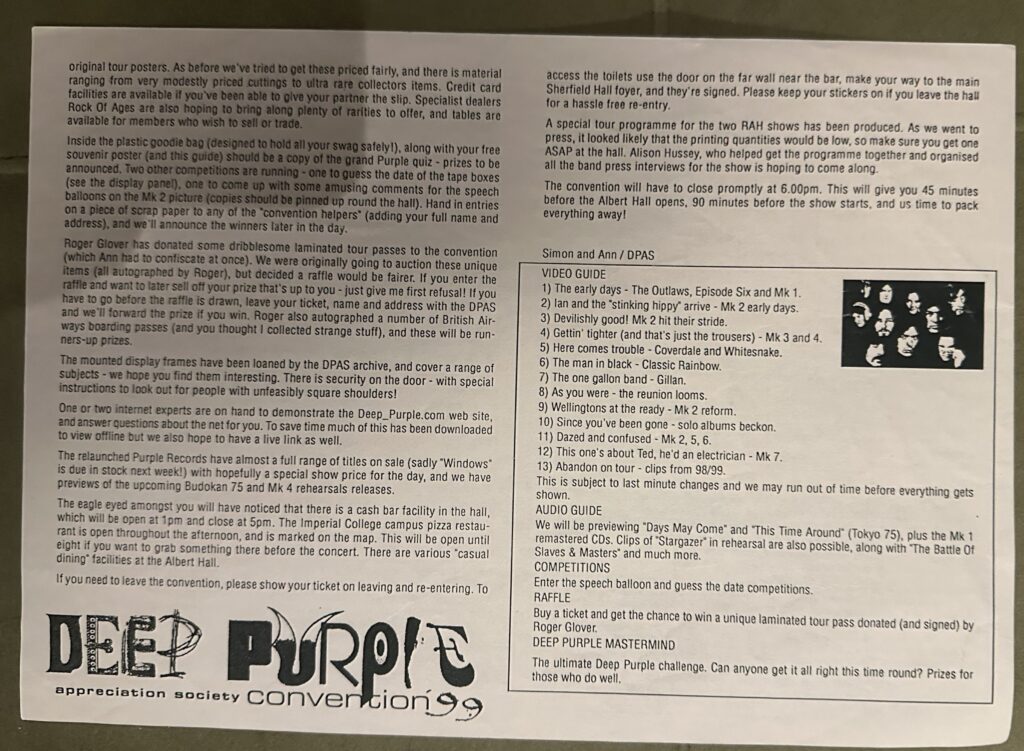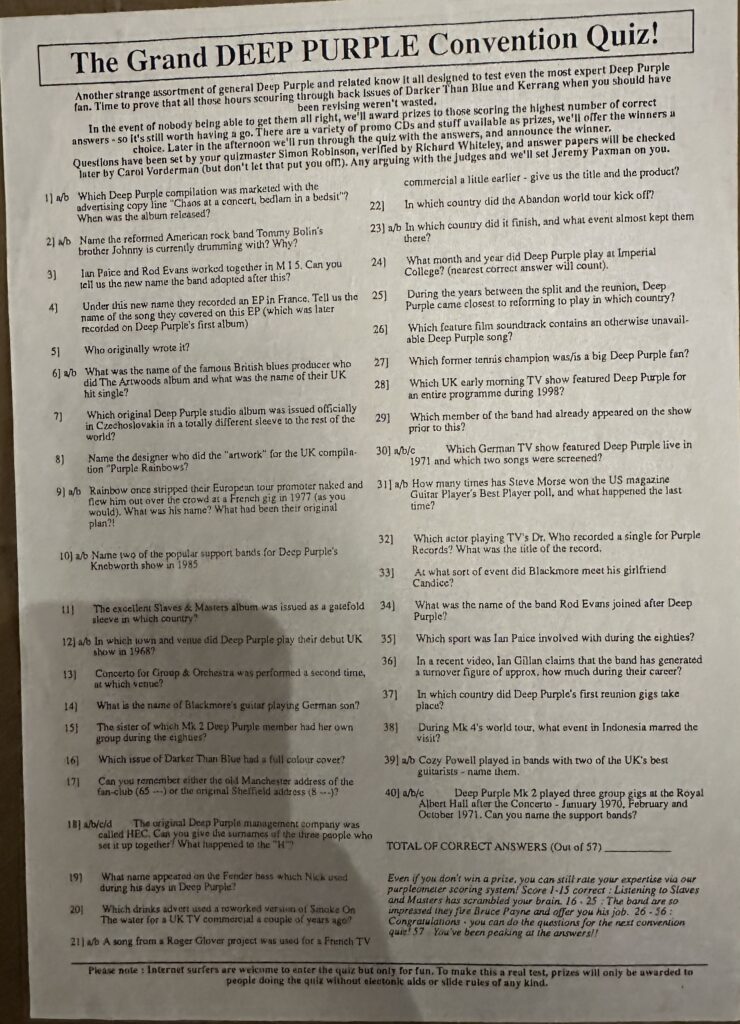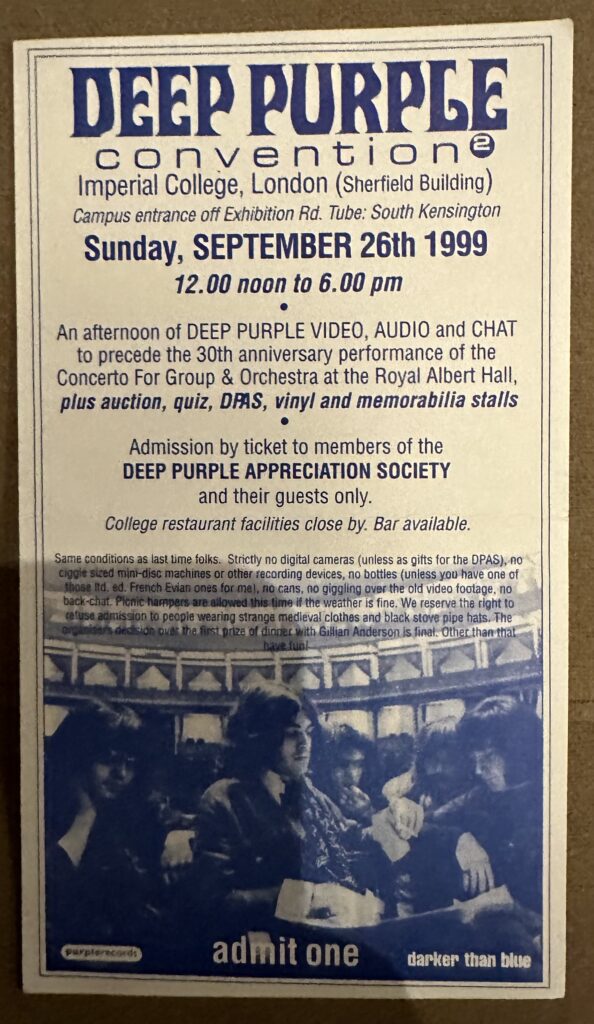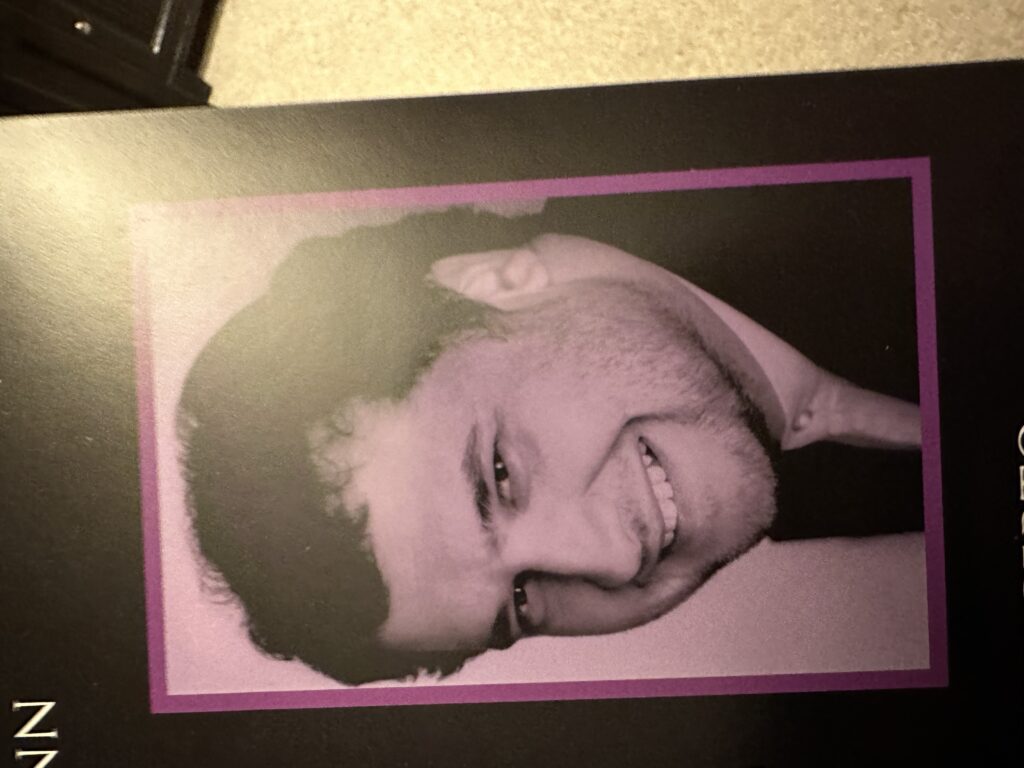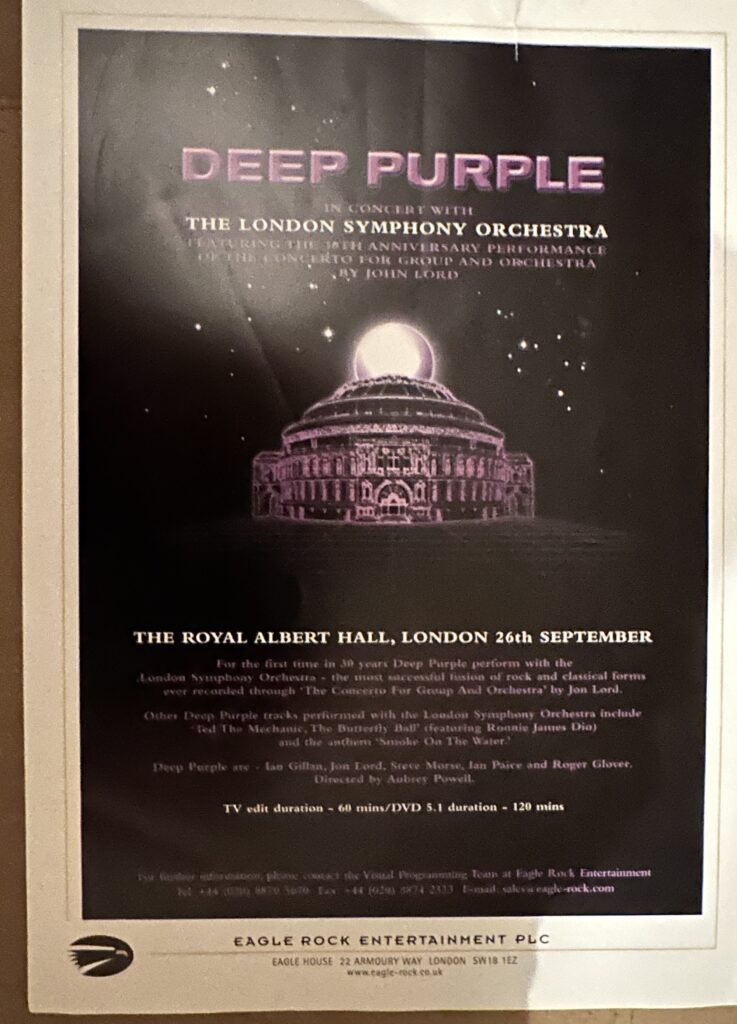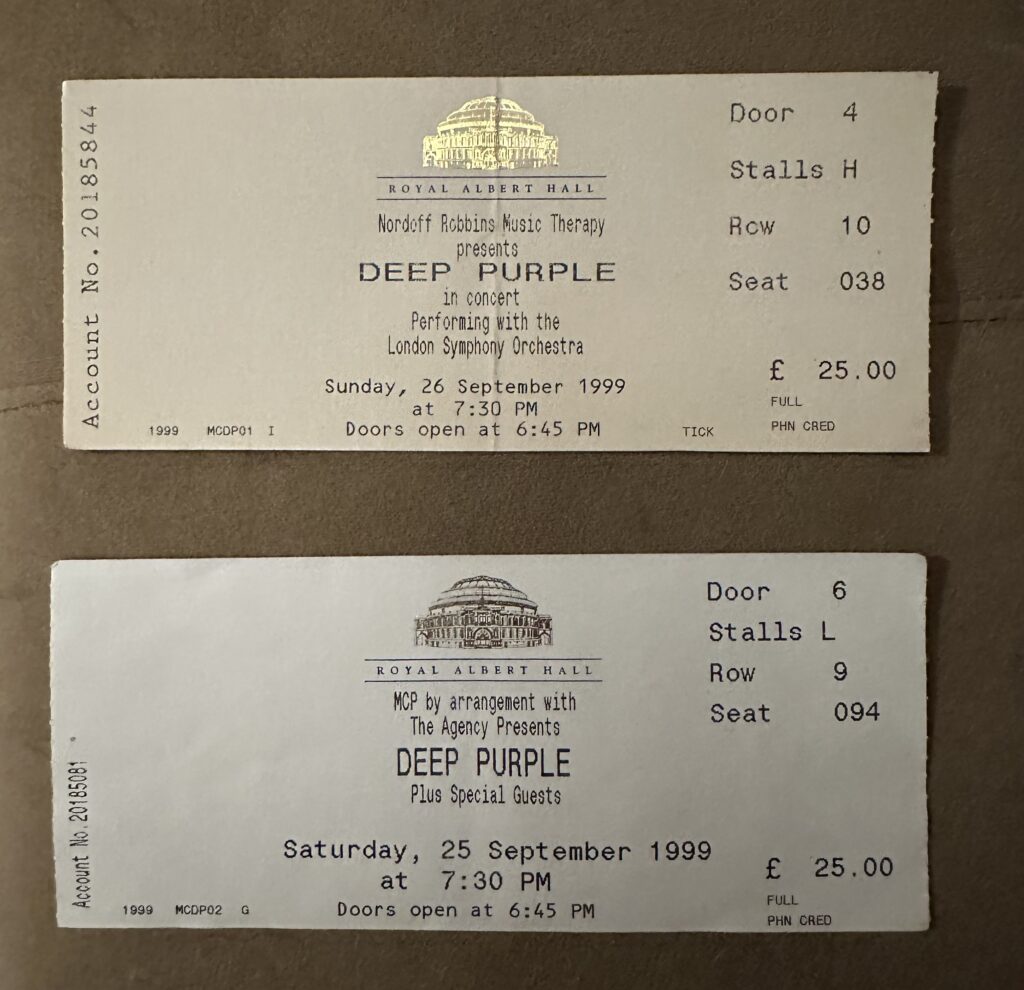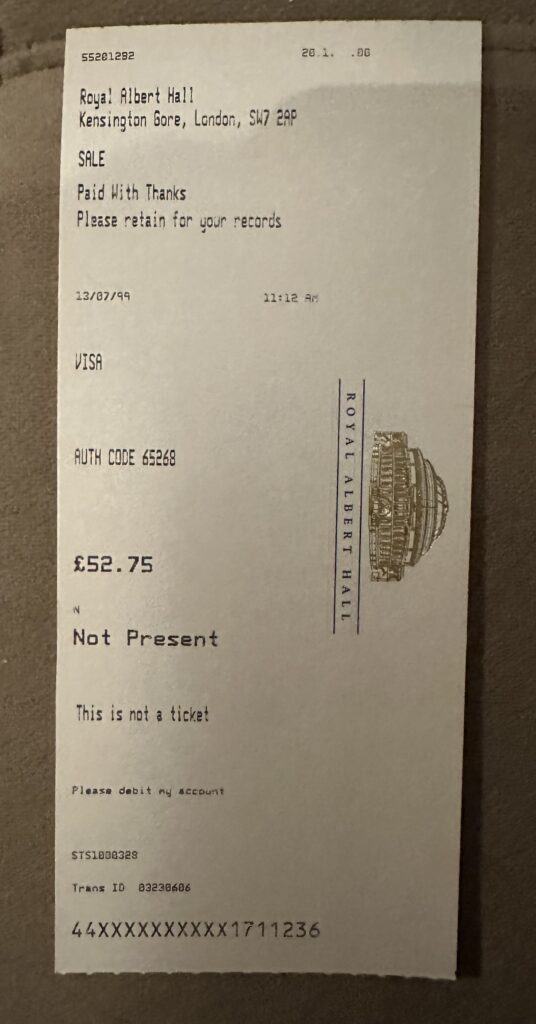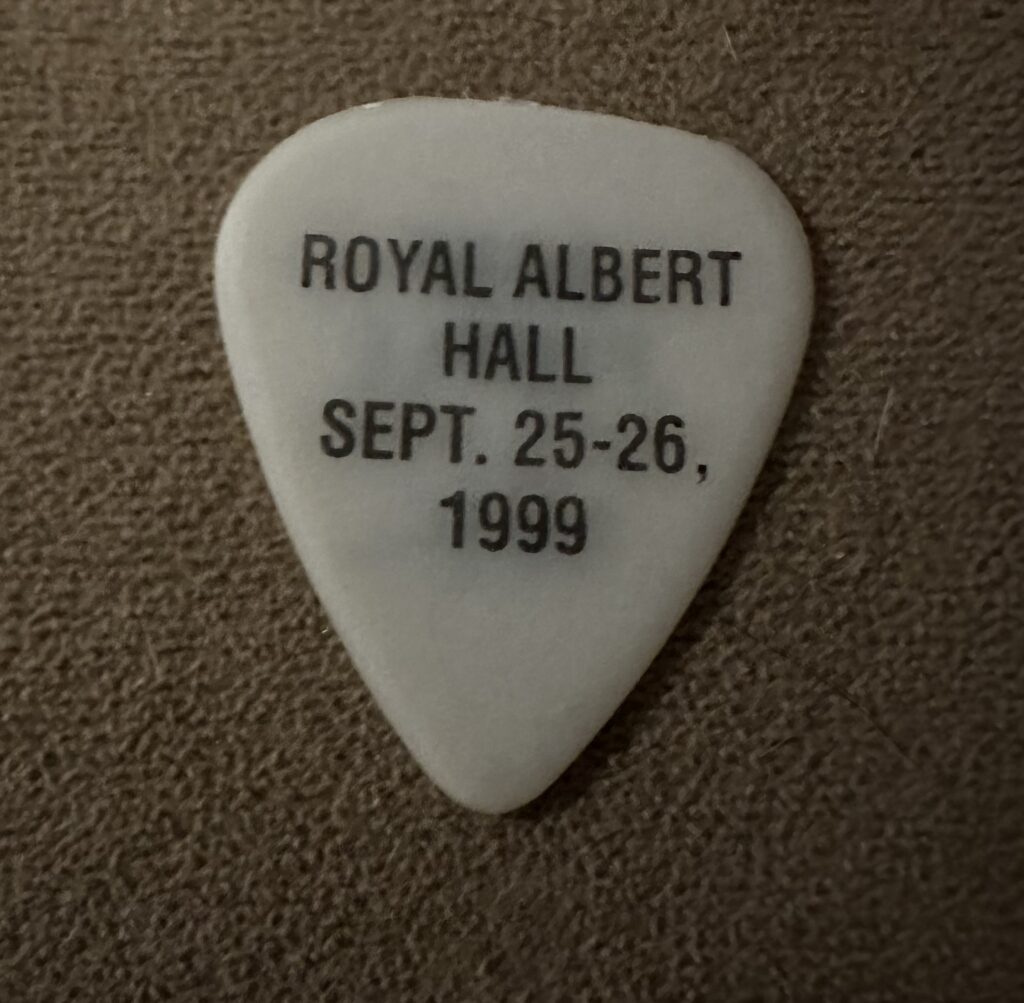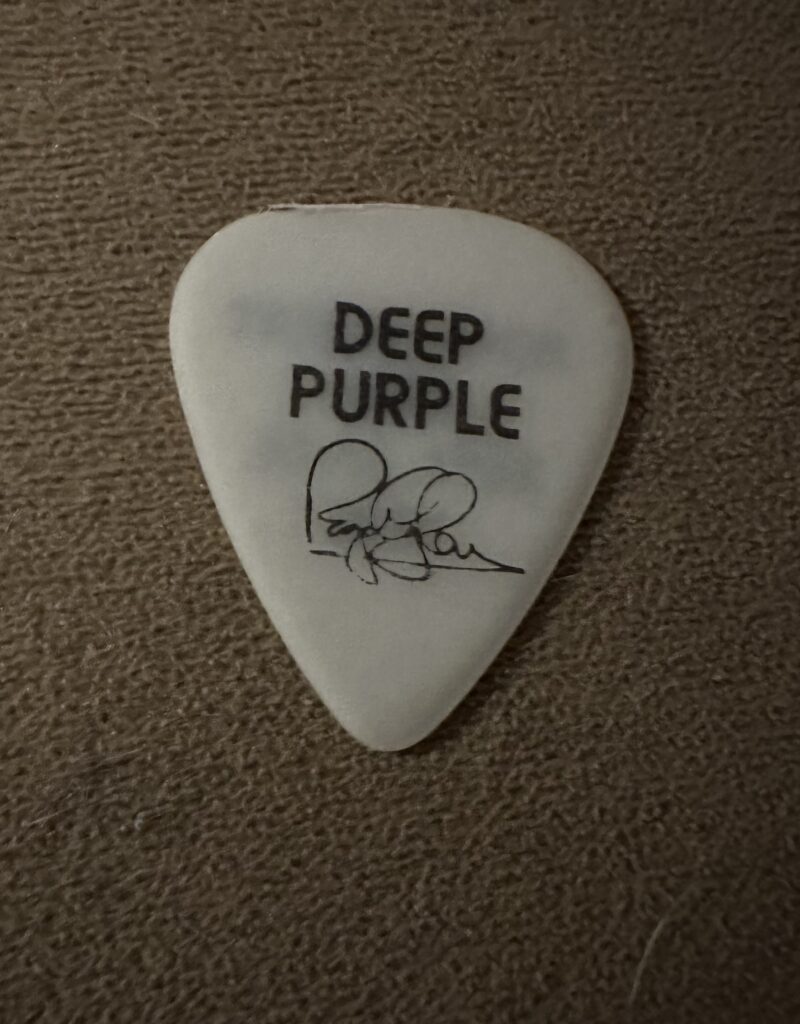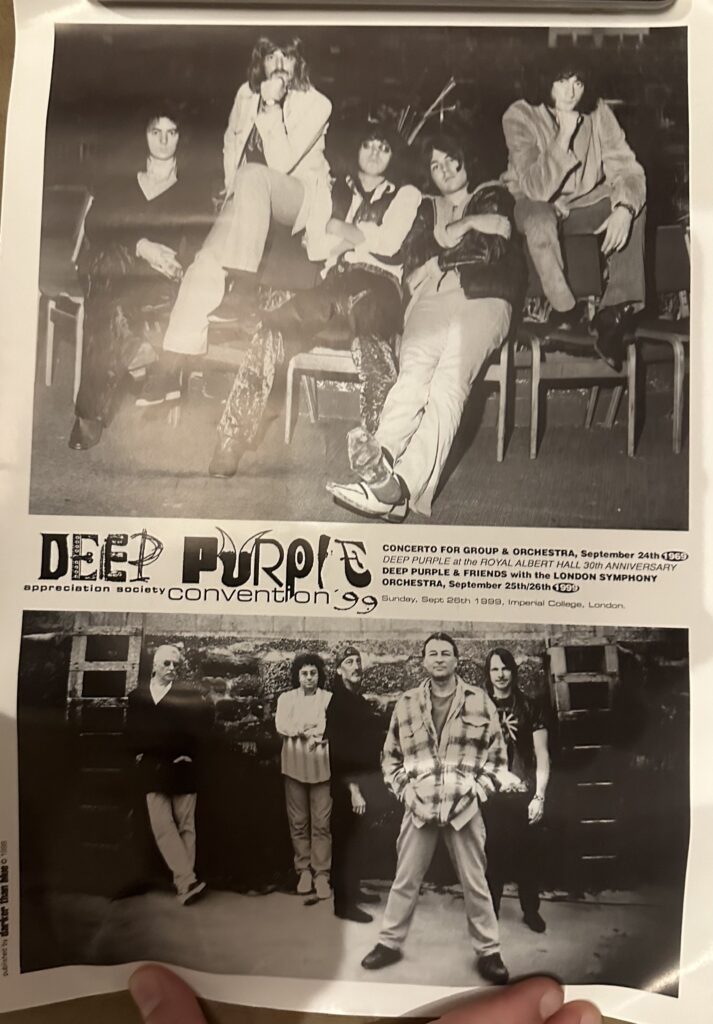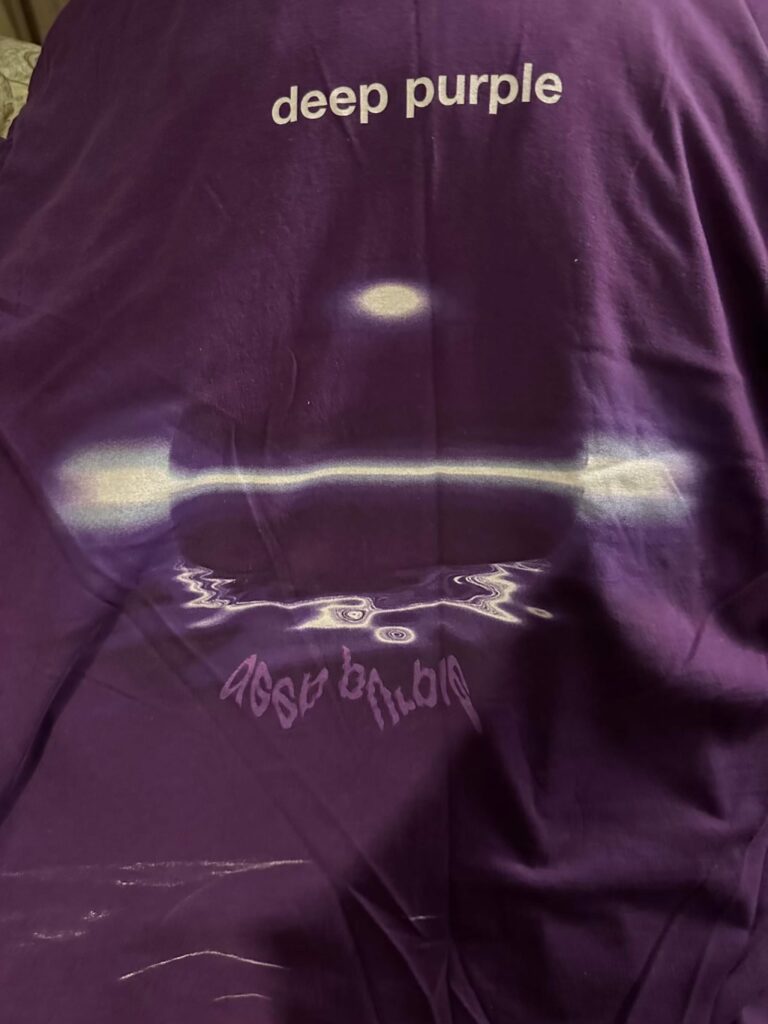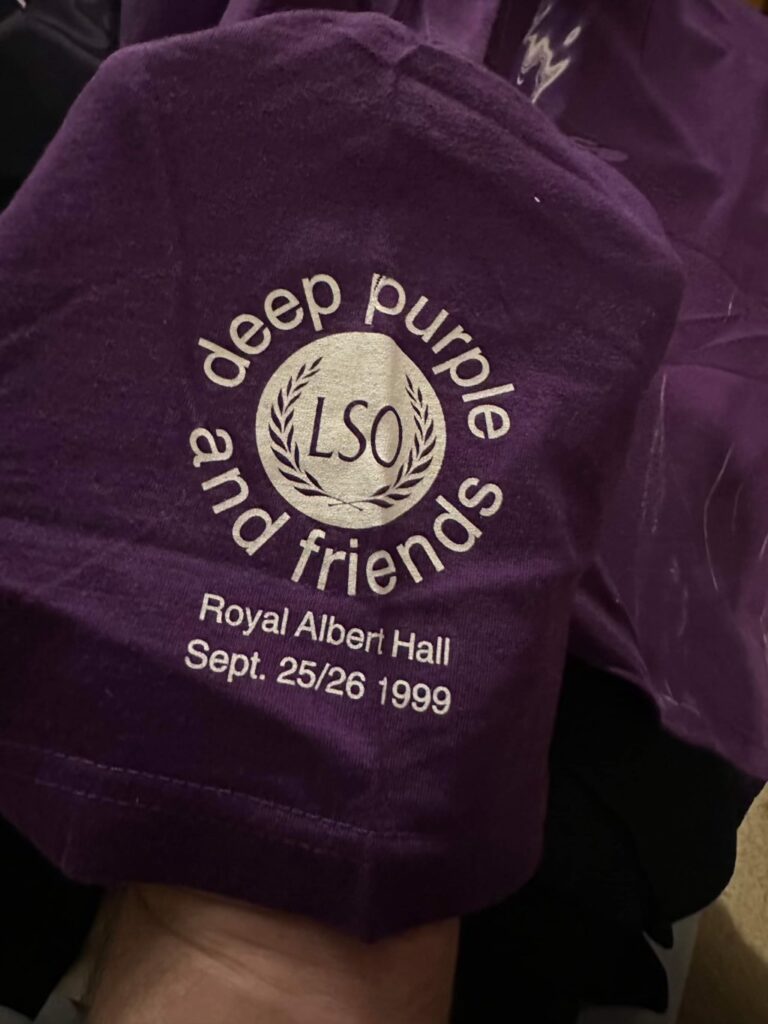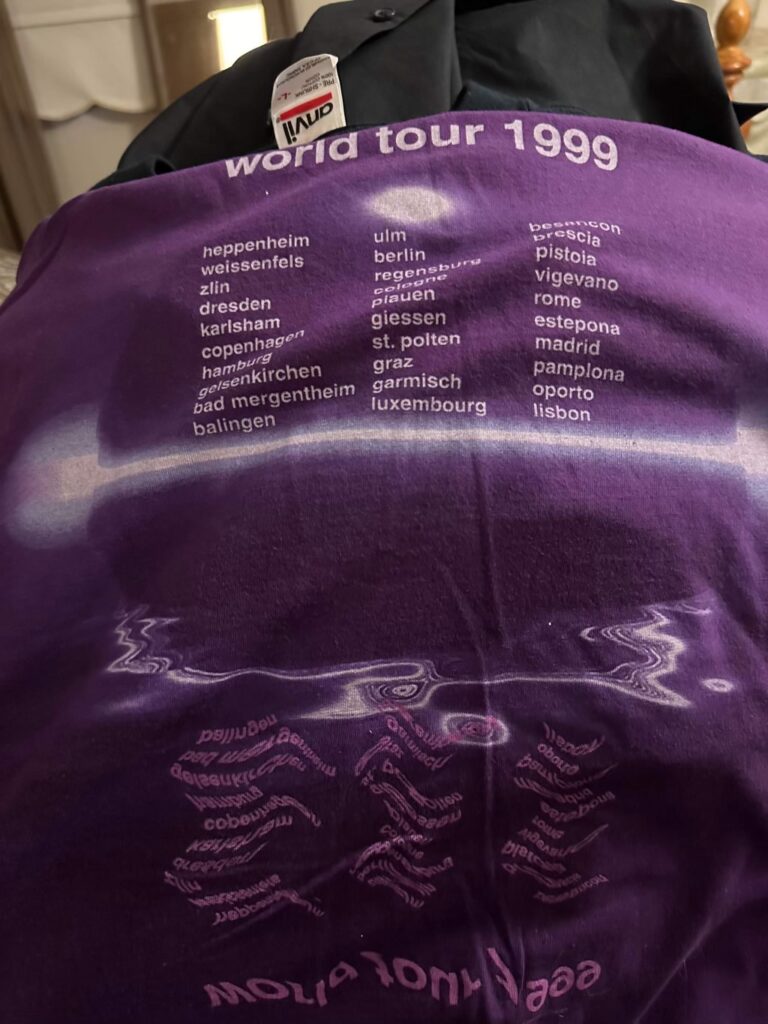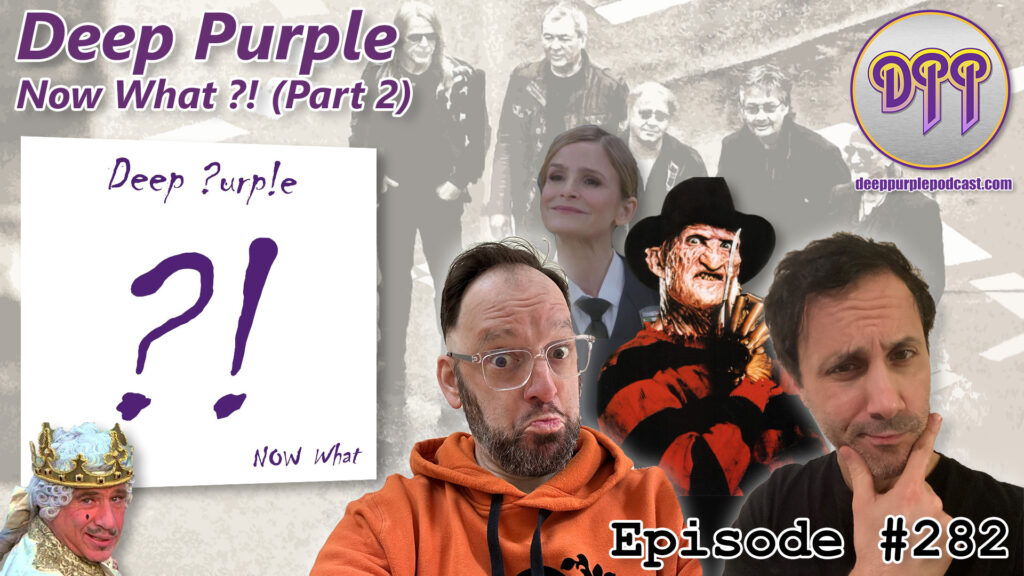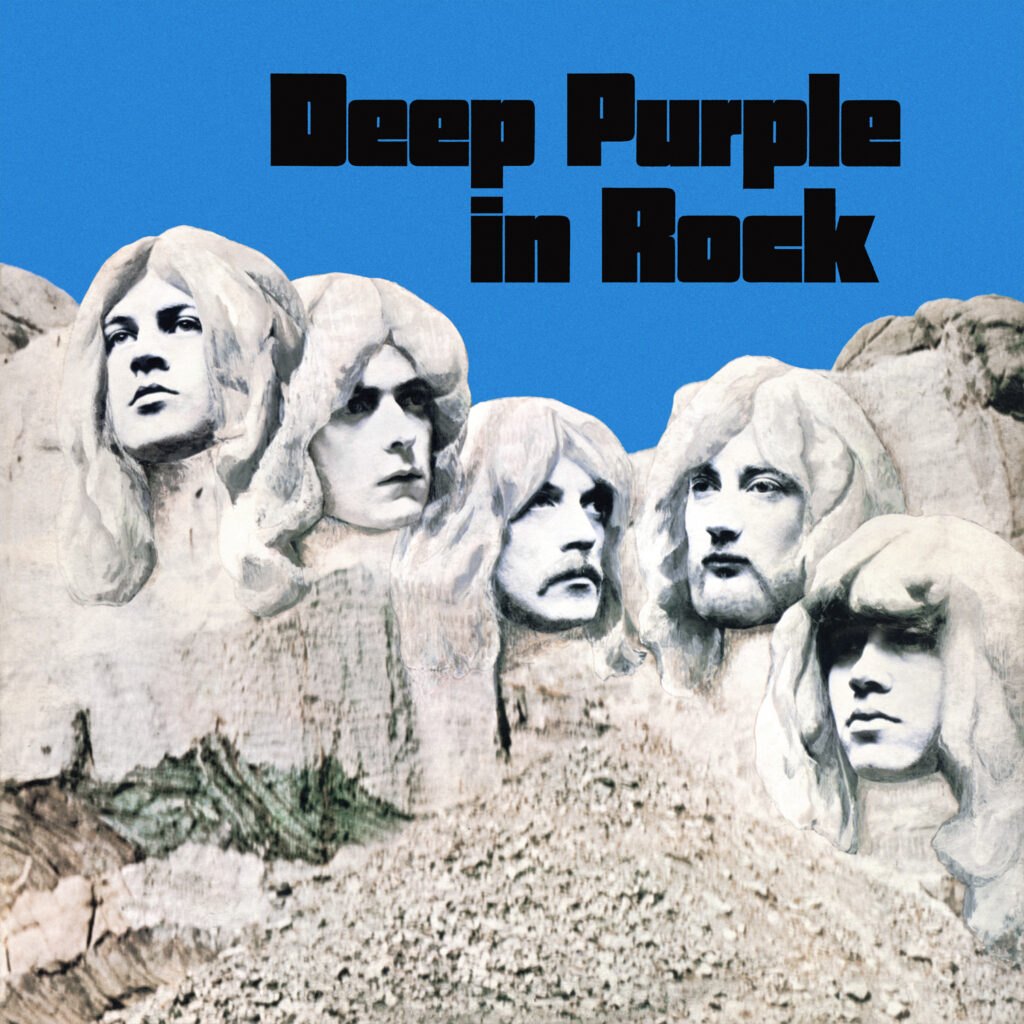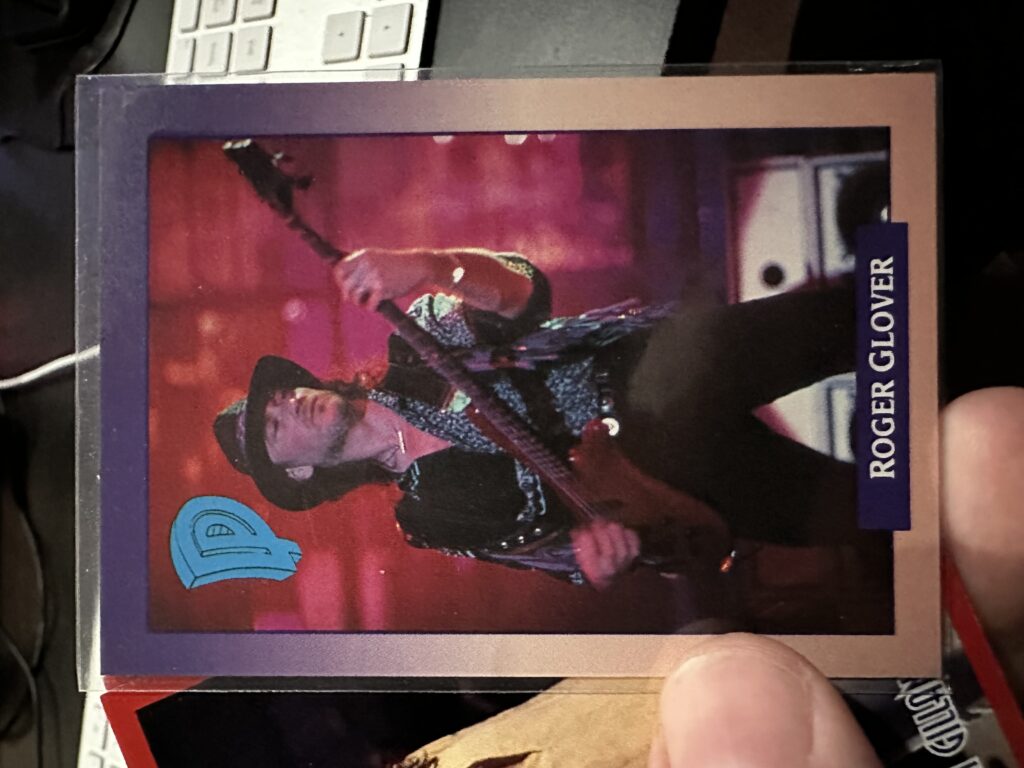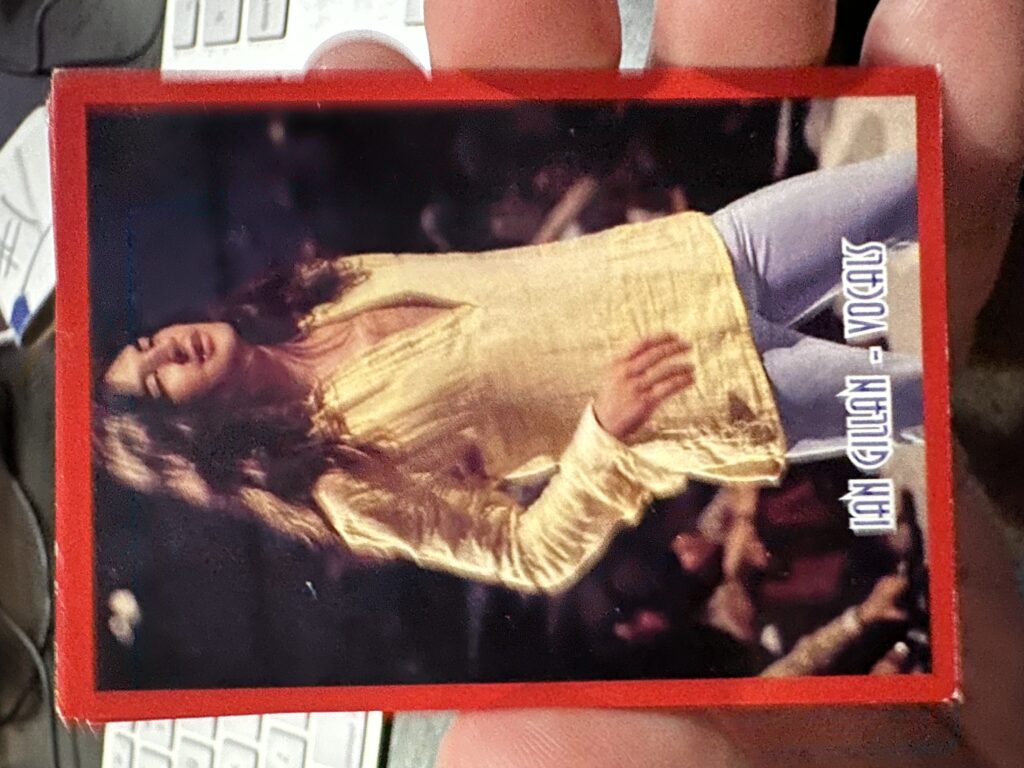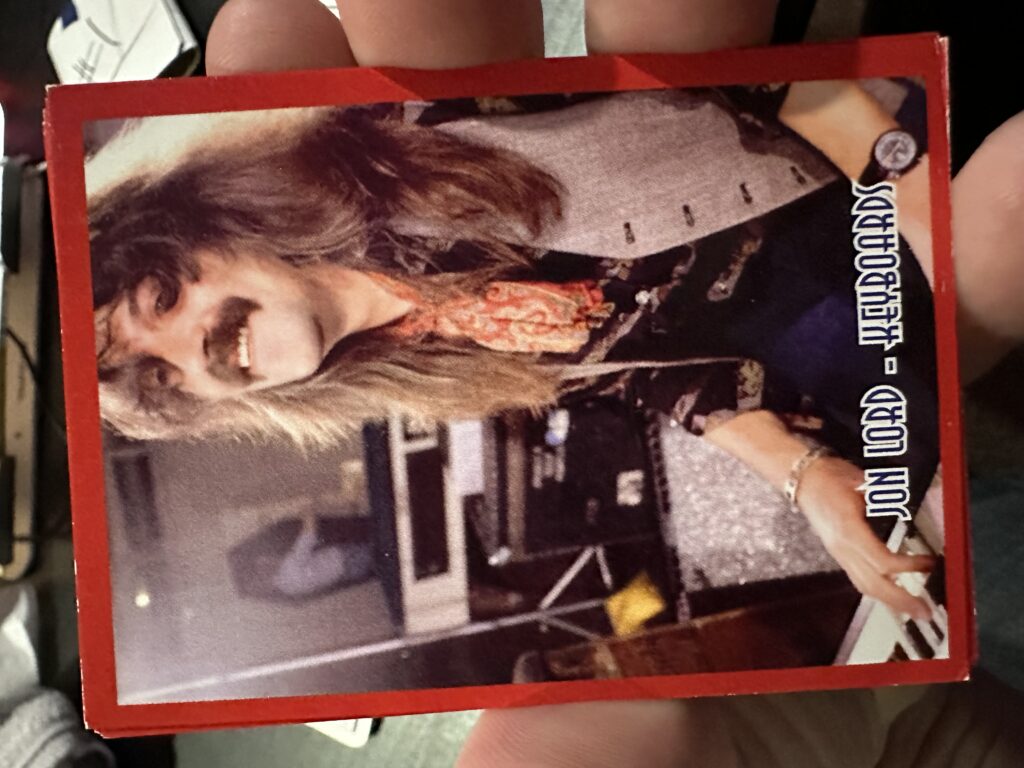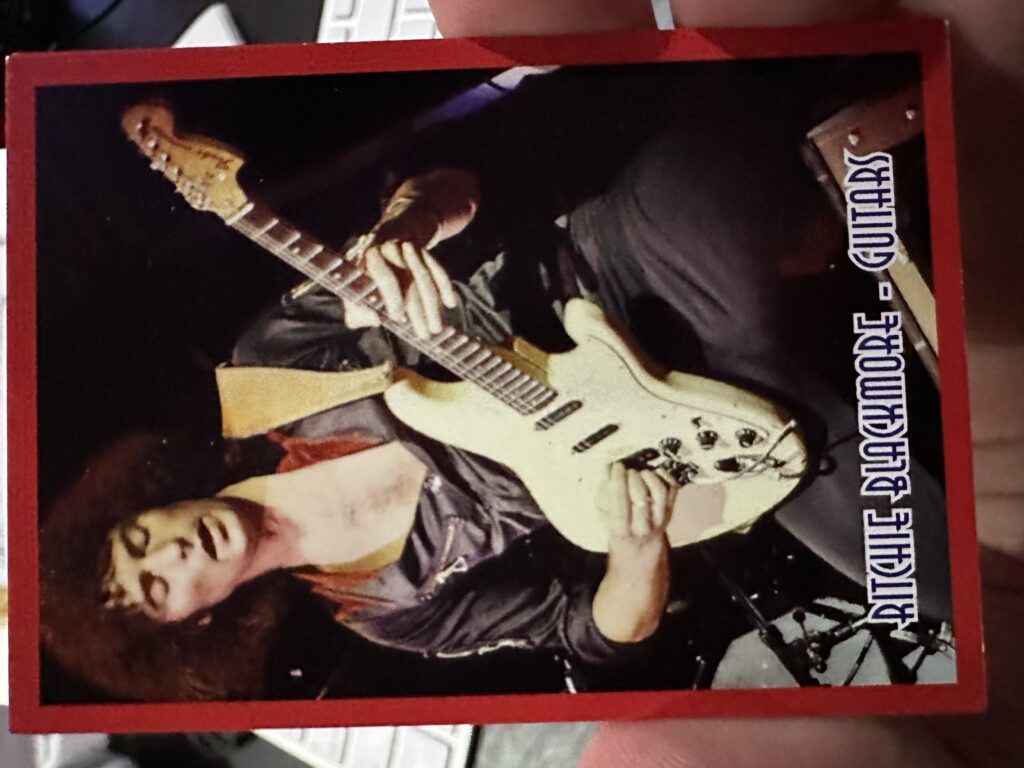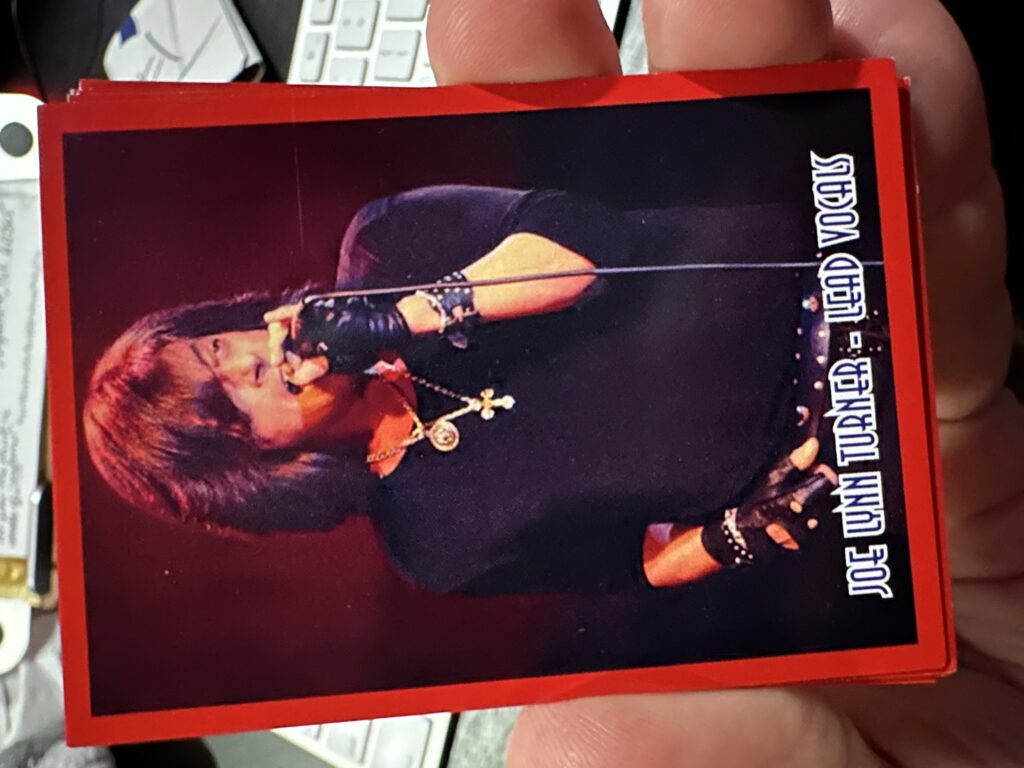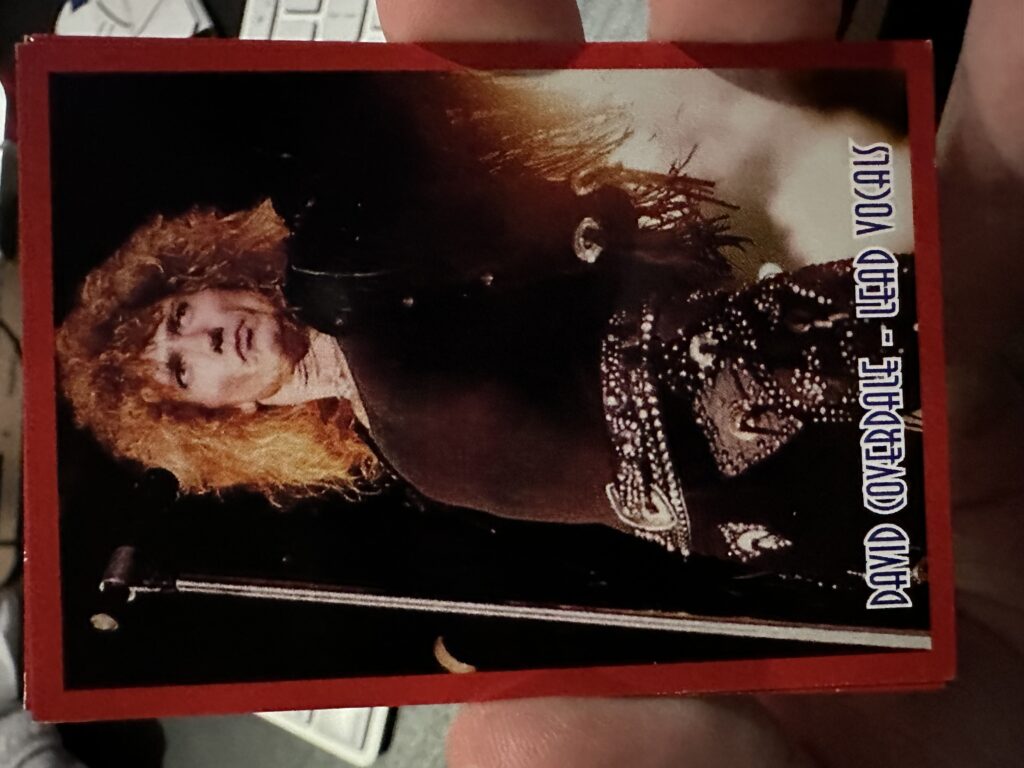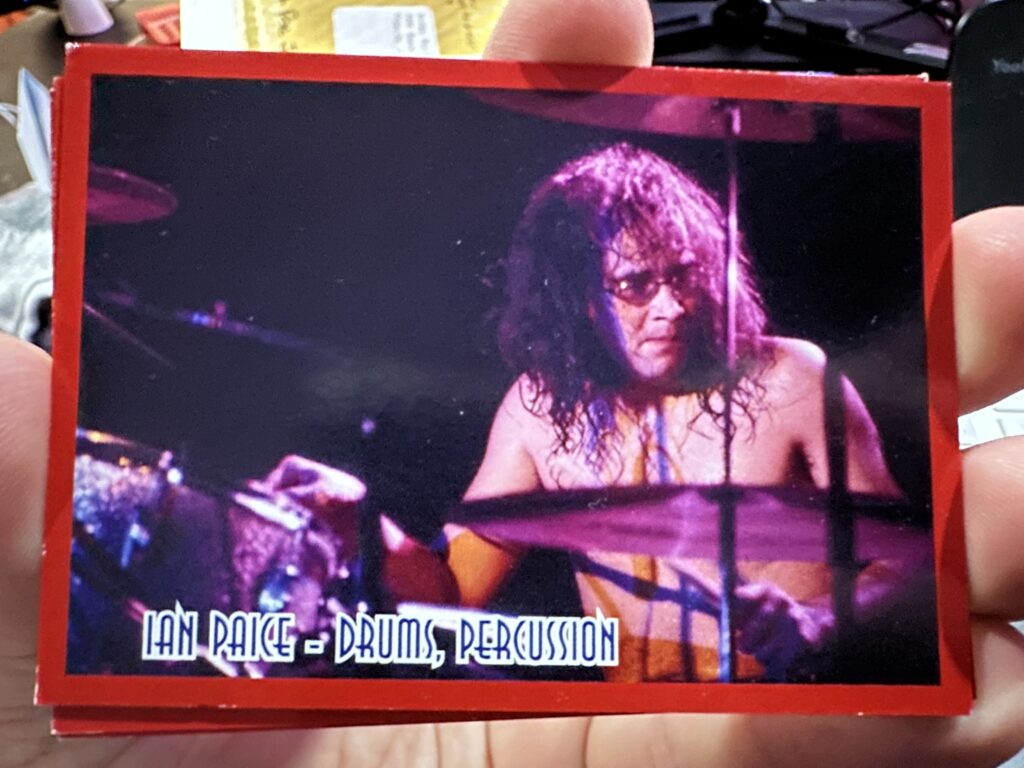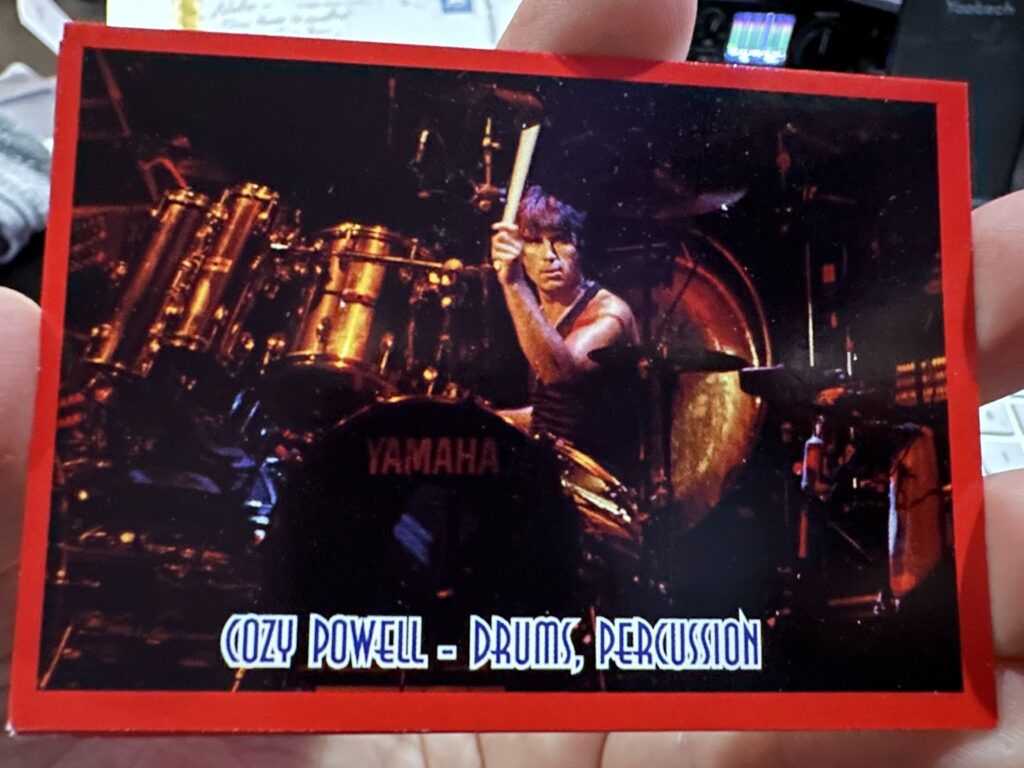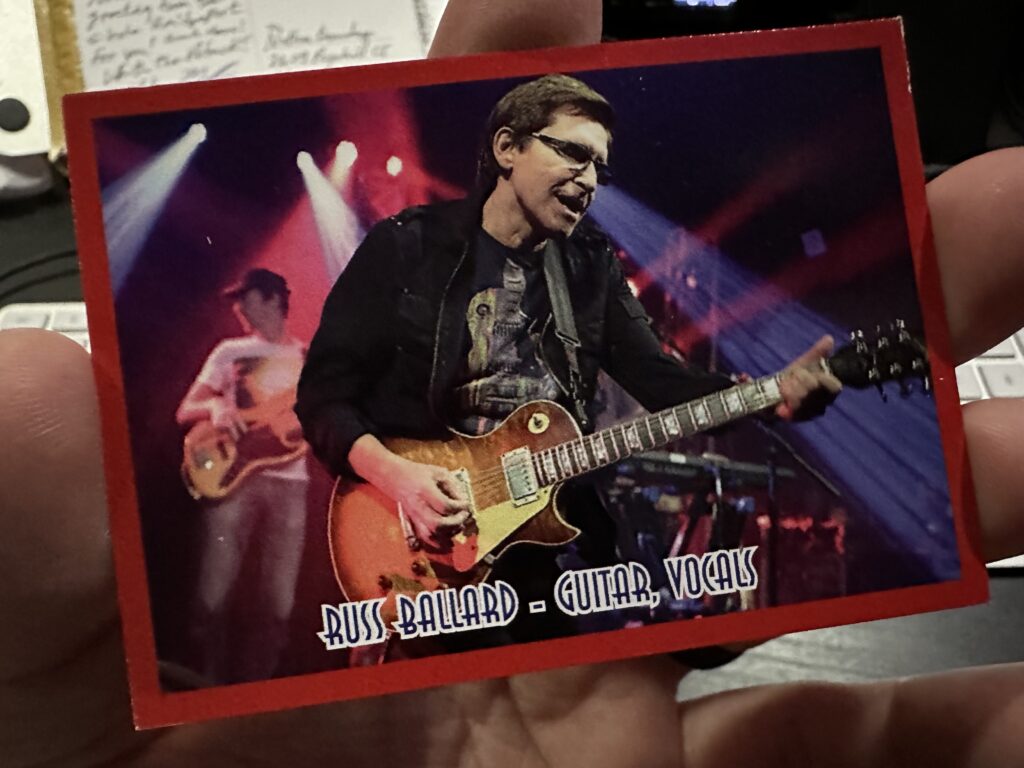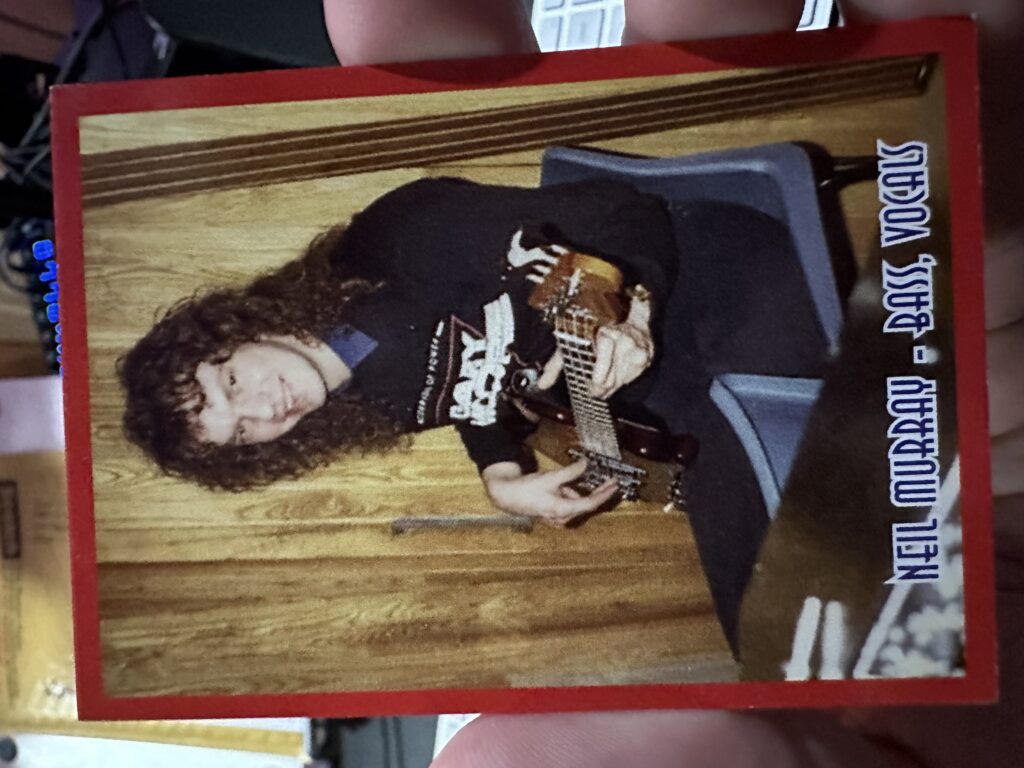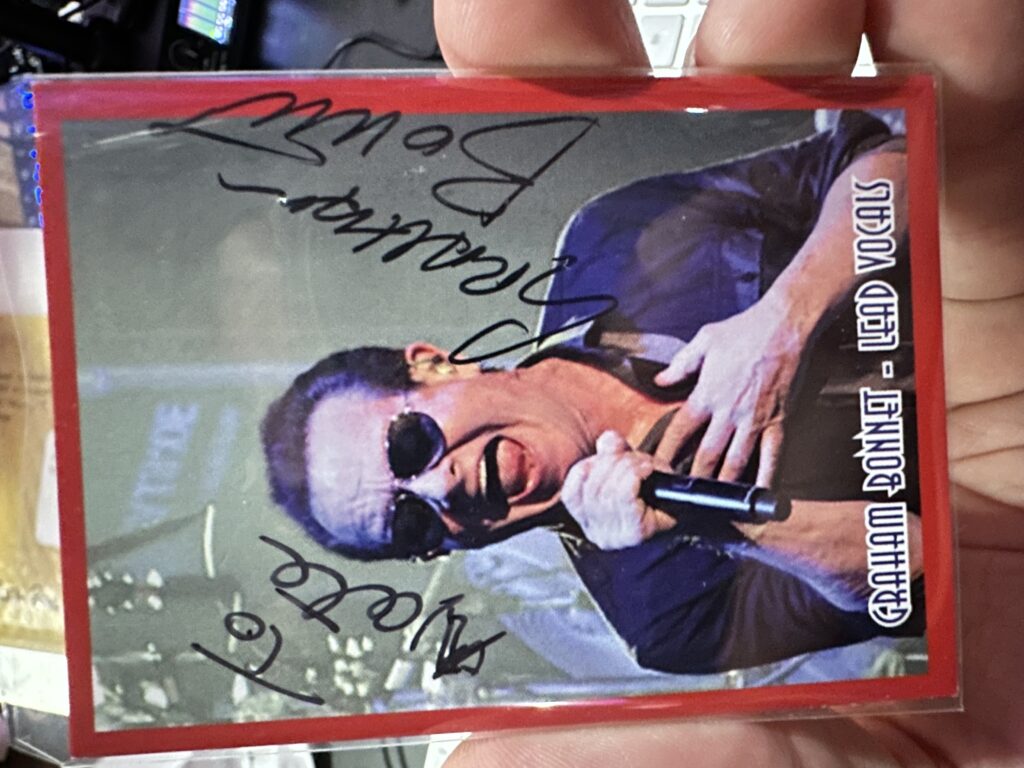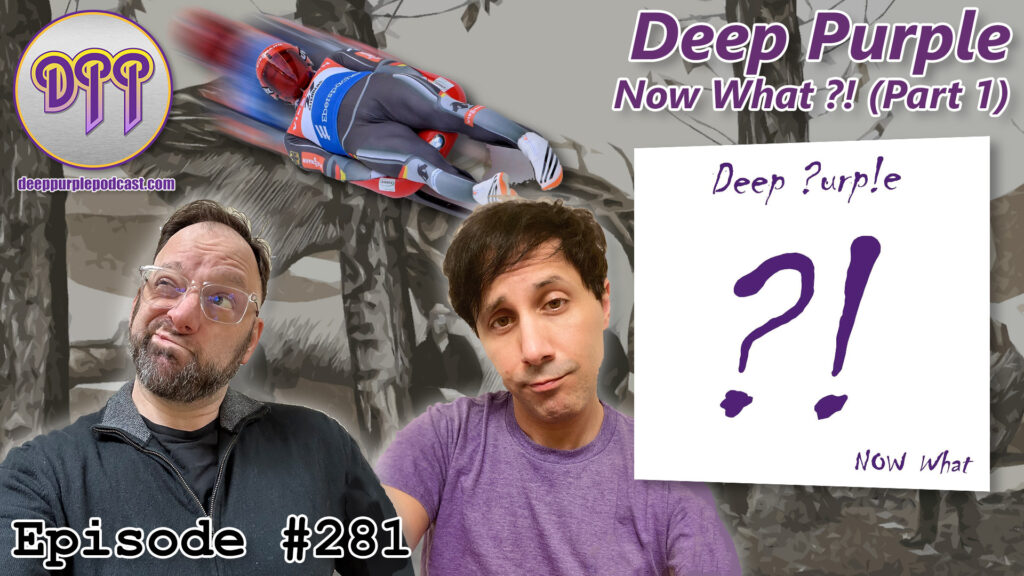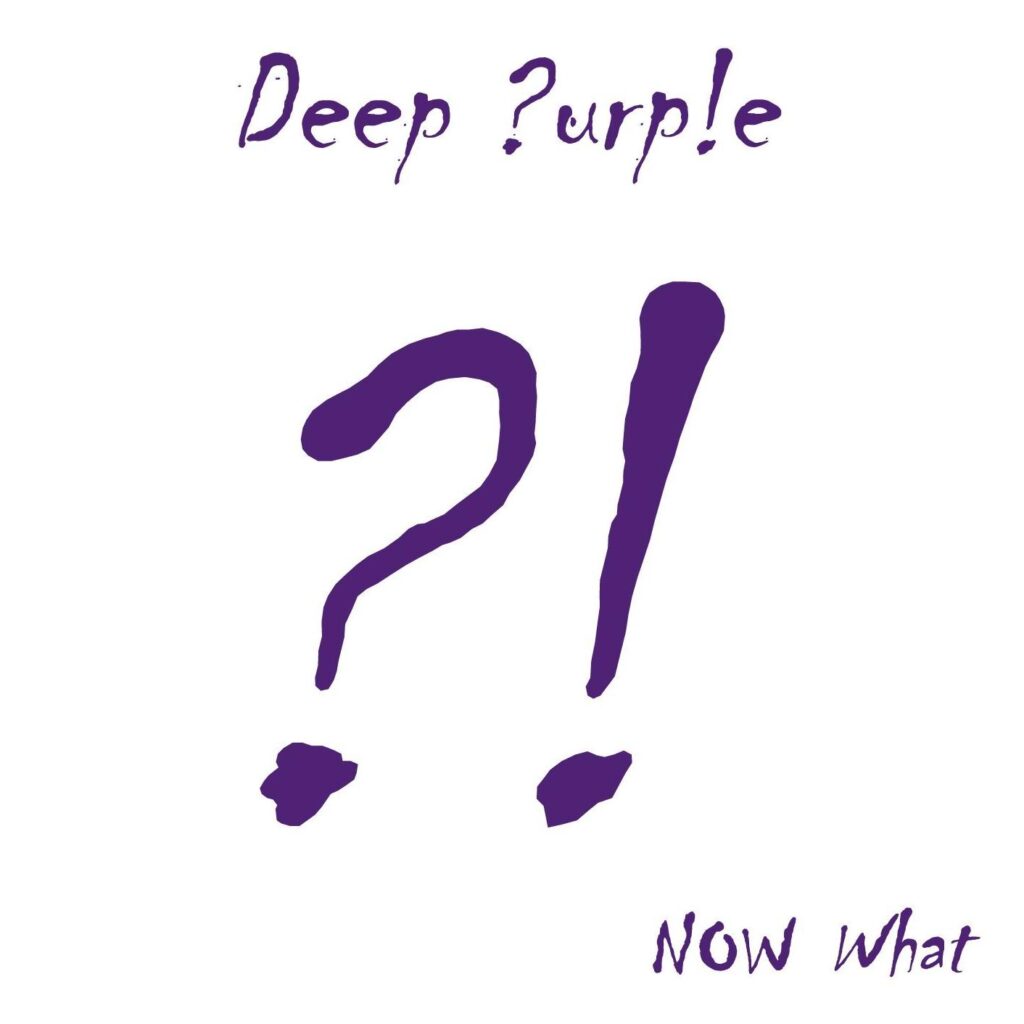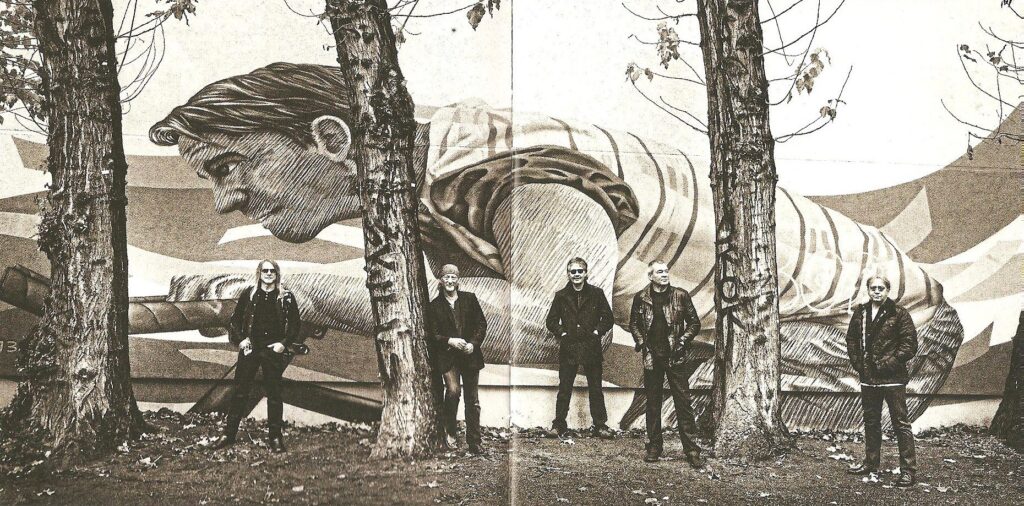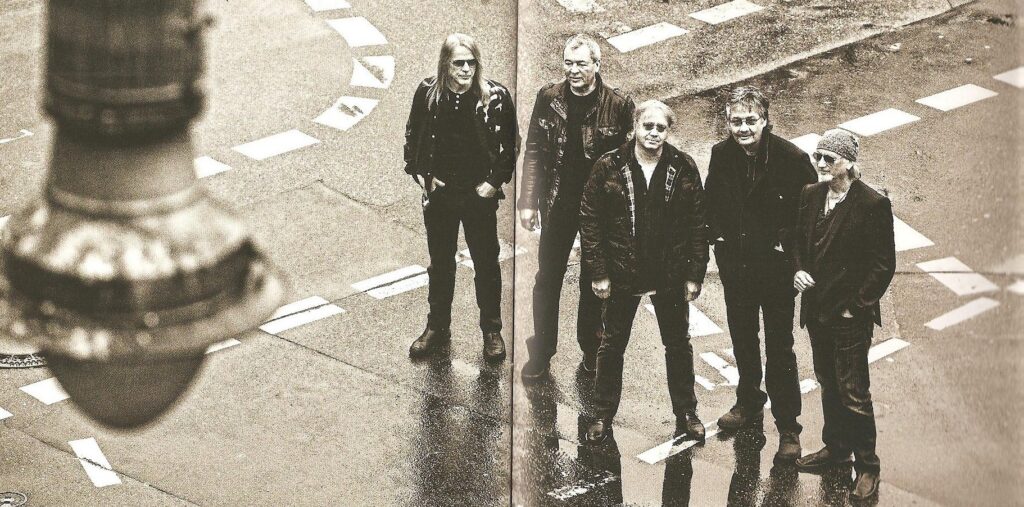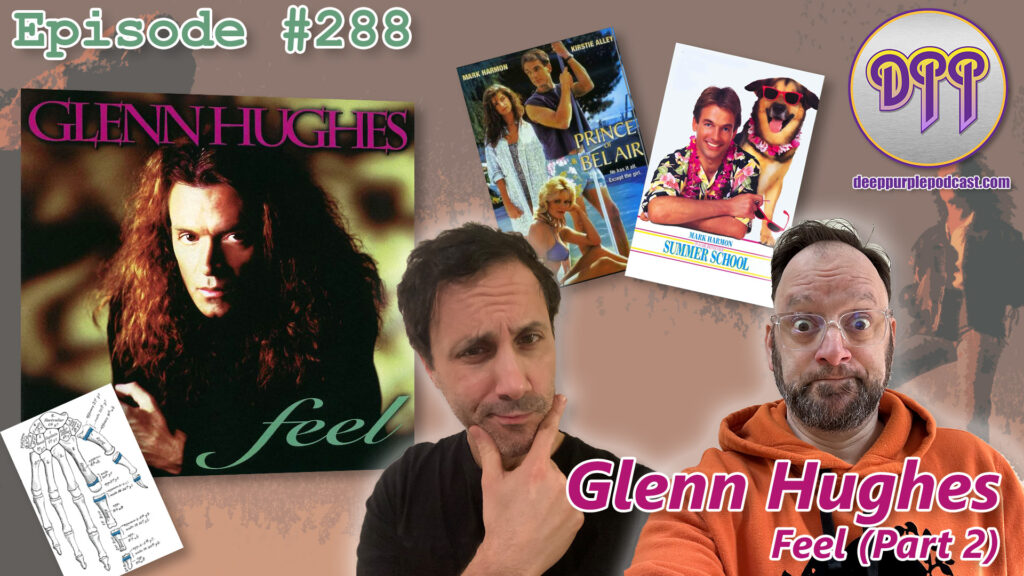
Disclaimer: The video used on YouTube is a byproduct of producing our audio podcast. We post it merely as a convenience to those who prefer the YouTube format. Please subscribe using one of the links below if you’d prefer a superior audio experience.
Subscribe at Apple Podcasts, Spotify, Google Podcasts, Overcast, Pocket Casts, Anchor.fm, Breaker, PodBean, RadioPublic, Amazon Music, Pocket Casts, or search in your favorite podcatcher!
How To Support Our Show:
The Deep Purple Podcast is 100% listener supported and ad-free! If you receive value from our show please consider supporting us!
- Leave us a 5-Star Review on Apple Podcasts
- Buy Merch at Our Etsy Store!
- Become a Patron on Patreon
- Donate on Paypal (Donate one time or click “make this a monthly donation” box)
- Donate to $DPPOD Using Cash App
- Support Us on Ko-fi
Brendan Ashbrook – Logo Designer
New Patron/Patron Upgrades:
- hh
Thanks to Our Executive Level Patrons:
- The “In Memorium” Tier
- Gerald “Jerry” Kelly & Family
- The $25 “Uncommon Man” Tier
- Ovais Naqvi
- The £15 “”Fifteen Squid” Tier
- Alan “Ain’t Too Proud To” Begg
- The £10 “Good Doctor” Tier
- Dr. Mike Kattan
- The Turn it up to $11 Tier
- Clay Wombacher
- Frank Theilgaard-Mortensen
- Mikkel Steen
- Will Porter, PhDPP
- Michael Bagford
- $10 “Some One Came” Tier
- Ryan M
- Jeff Breis
- Victor Campos
- “Better Call” Saul Evans
- Peter from Illinois
- The “Hughes-O-Ween by 2033” Tier
- Fielding Fowler
Patron Updates:
- Hh
Upcoming Shows & Listener Meet Ups:
- Deep Purple Upcoming Tour Dates
- https://deeppurple.com/pages/tours
- Potential UK Patron Meet Up
Upcoming Rankings Show:
- Deep Purple In Rock
- Patron rankings needed by October 27th
- Become a patron if you want to be invited to the live stream and submit your rankings!
Deep Dive Podcast Network:
Check out our website to find other like-minded shows taking deep dives into individual songs, bands, and albums.
Postcards From The Edge . . . OF CONNECTICUT!
- hh
Show Review
- hh
Hall of Fame Presentation:
- hh
Lead up to the Album:
- hh
Core Band:
- hh
Additional Musicians:
- hh
Technical:
- hh
Album Art & Booklet Reew
- hh
The Venue:
Setlist
- hh
Album Tracks:
Side One:
- hh
Side Two:
- Hh
Album Tracks:
- Push! (Hughes)
- Guitar – Pat Thrall
- Keyboards – Marc Hugenberger
- Producer – Glenn Hughes
- She Love Your Money (Hughes, Allison, Gowdy)
- Guy Allison
- Producer – Bruce Gowdy, Glenn Hughes, Pat Thrall
- Rhythm Guitar – Pat Thrall
- Soloist, Guitar – George Nastos
- Speak Your Mind (Hughes, Rojas)
- Guitar – George Nastos
- Keyboards – Carmine Rojas, Marc Hugenberger
- Producer – Glenn Hughes
- Maybe Your Baby (Wonder)Talkin’ To Messiah (Gowdy, Hughes)
- Drums, Percussion – Matt Sorum
- Guitar – Bruce Gowdy
- Keyboards – Bruce Gowdy
- Producer – Bruce Gowdy, Glenn Hughes, Pat Thrall
- Marc Fevre:Matt Sorum recording the drum part for “Talkin’…,” which had originally been built around a rhythm track that Glenn and Bruce Gowdy had worked out on a drum machine. It was a tricky piece, with some intricate time breaks, and Matt had to not only learn them all, but to embellish them as well. Obviously he did a great job, though, as the finished track will testify.
- “(Glenn and Matt checking out Matt’s final take on ‘Talkin To Messiah’.”) I remember sitting with Glenn in the control booth for part of this session, watching him watch Matt. Matt was such a nice guy, and Glenn was so pleased to have him play on that song, to have him appear on the album, just to have him around, that at one point he turned to me, smiling, and said: “Marc, you’ve got to get lots of pictures with Matt. Lots of pictures.”
- Keyboards – Greg Phillinganes
- Producer – Glenn Hughes
- Rhythm Guitar, Soloist, Guitar [1st Solo] – Pat Thrall
- Soloist, Guitar [End Solo] – George Nastos
- Holy Man (Coverdale, Hughes, Lord)
- Guitar – George Nastos
- Keyboards – Marc Hugenberger
- Producer – Glenn Hughes
- (“Gary and Glenn recording the rhythm section to ‘Holy Man [’95]’.”) What a team! The guys cut the rhythm tracks on this song live and in one take, too! Believe it or not, Glenn hadn’t played this number since 1974 or 75, and so he’d had to spend a couple of minutes before this session holed up in the control booth with Gary Ferguson listening to the original version off of the “Stormbringer” album a few times before going into the recording chamber, plugging in, and whipping this one out. Looking back on it, I remember how impressed we were, not only with Glenn, but with Gary as well, at how professional he was, building and then playing his parts with speed and efficiency. He was amazing really.
Thanks to Our Core Level Patrons:
- The $8.99 “What’s Goin’ On Here” Tier
- Richard Fusey
- The $7.77 KeepItWarmRat Tier
- Michael Vader
- The $6.99 “New Nice Price” Tier
- Spike the Rock Cat
- Sugar T
- The Episode $6.66 Tier
- Steve Coldwell
- Arthur Smith
- Anton Glaving
- Charles Meadows
- The $6.65 “Almost Evil” Tier
- Kenny Wymore
- Richie Sucksmith
- $5.99 The “Nice Price” Tier
- Robert Smith
- Karl Hellberg
- The 60 Kroner “Scandinavian Nights” Tier
- Knut Morten Johansen –
- $5 “Money Lender” Tier
- John Convery
- German Heindl
- Adrian Hernandez
- Jesper Almén
- Oleksiy The Perfect Stranger Slyepukhov
- Kev Roberts
- Percival Frequency
- Scott Zerns
- Cynthia Dube
- Raff Kaff
- Coyote Bongwater
- John Miceli
- Sarah Sanders
- Jellybean
- Evan Robison
Bustin’ Out The Spreadsheet
Reception and Charts:
- hh
Reviews
| Glenn Hughes – Feel | |
| STYLE: RockRATING OUR PRODUCT CODE: 17856-27450LABEL: SPV 08589762FORMAT: CD AlbumITEMS: 1 | |
Reviewed by Mike RimmerIn 1994 I reported the career revival of Glenn Hughes who was travelling the road of recovery from drug and alcohol abuse through the grace of God and various support agencies. His personal revival continues to be expressed not through radical Jesus lyrics but simply because this former incapacitated rock’n’roll casualty continues to have his life together on the road and in the studio. Through his Deep Purple heritage it sometimes feels as though fans’ expectations force Hughes into being more of a rock singer than he’d like. However, whether he’s bellowing out the heavier side of this album on “Big Time” or “Redline” or getting funky on “Coffee And Vanilla”, Glenn Hughes has one of the exceptional and versatile voices of British rock. Certainly on the funky stuff like the sublime “Speak Your Mind” and the sax enhanced “Save Me Tonight” where he soars off into the heights. As well as his voice, it’s good to hear Hughes slappin’ that bass again. Long time fans will be pleased to hear Pat Thrall reinstated on guitar duties and contributing subtle and not so subtle additions to the proceedings. A close inspection of the lyrics reveals a few carefully coded references that show Glenn is still aware of the source of his continued strength. Worth getting into just to check out the wonder of Glenn Hughes’ tonsils!The opinions expressed in this article are not necessarily those held by Cross Rhythms. Any expressed views were accurate at the time of publishing but may or may not reflect the views of the individuals concerned at a later date. |
| Feel – Album Review |
| Xero XRCN 1243 : JAPAN : July 1995 CDGlenn’s latest studio offering again came out in Japan far in advance of anywhere else. Eleven tracks plus a bonus re-re-cording of “Holy Man”. I have to admit that with so many advance reports stressing the mediocre nature of the material, it was a long time before I summed up courage to play it through properly. It saddens me to admit that most of what people were saying to me was right.The whole CD really lacks direction and drive. It has no real spirit or identity. Glenn seems to have had so little to fight against on here that he really goes through the motions. Yes it is wonderfully performed vocally but Glenn is so gifted in this department these days that one looks for a little more somehow. The rockier direction of his live shows has all but gone, yet the slower funkier material fails to catch fire – crying out for some really dirty bass and Bolinesque guitar, and also lacks basic melody much of the time. Elsewhere tracks like “Big Time”, the opening song, do have a lot more promise – a modern backing which manages to deliver something a little stronger for once. I dunno, I really feel Glenn needs some very good firm production help to begin to push him forward, for albums like this just won’t advance the cause one iota. |
Merch, Etc.
- H
Thanks To Our Foundation Level Patrons:
- £3.50 “Deep Purple NY” Tier
- Lord Longford
- The £3 “The Aromatic Feed” Tier
- Simon Ford
- Richard Breese
- The $3.33 Half Way to Evil Tier
- Stephen Sharpe
- Duncan Leask
- $3 “Nobody’s Perfect” Tier
- Peter Gardow
- Ian Desrosiers
- Mark Roback
- Stuart McCord
- Flight of the Rat Bat Blue Light
- Øyvind Fjeldbu –
- Runar Simonsen –
- Ruinous Inadequacies
- Corey Morrissette
- Ashely { Still I hear, “Burn” } Rose
- Weston-super-Mare pilgrim
- Joe “Dopefish” Siegler
- The $1.71 “I Want My Own Tier” Tier
- Rich “Yngwie” Shailor
- The 10 kr “” Tier
- Carsten Lau
- $1 Made Up Name Tier
- The “She Loves Your Runny” Leaky Mausoleum
- Stephen Sommerville The Concerto 1999 Fanatic
- Hank the Tank
- Private Eyes
- Ashen Lionel
- Blackmore’s Tights
- Steve “Down to Earth” Koeller
- Zwopper The Electric Alchemist
- Anders Engstrom
- I see DC
- Durple Purple
- Purple Swede
- David Hattam
- Graham Bonnet’s Disco Pants and Haircuts
- Eddie Lion
For Further Information:
- https://en.wikipedia.org/wiki/Feel_(Glenn_Hughes_album)
- https://www.discogs.com/release/1250528-Glenn-Hughes-Feel
- https://www.glennhughes.com/feel.html
- https://www.glennhughes.com/makingoffeel.html
- https://www.discogs.com/release/6370771-Glenn-Hughes-%E3%82%B0%E3%83%AC%E3%83%B3%E3%83%92%E3%83%A5%E3%83%BC%E3%82%BA-Feel-%E3%83%95%E3%82%A3%E3%83%BC%E3%83%AB
- https://www.crossrhythms.co.uk/products/Glenn_Hughes/Feel/17856/
- Darker Than Blue Issue 48 January / February 1996
- Glenn Hughes The Autobiography: From Deep Purple to Black Country Communion by Glenn Hughes
Extra Thanks To:
- hh
Listener Mail/Comments
- Comments about the show? Things you’d like us to cover? We’d love to hear from you. Send us an email at info@deeppurplepodcast.com or @ us on Twitter, Facebook, or Instagram.
Summer school
Business or pleasure
Faddapper
Greg falanges

